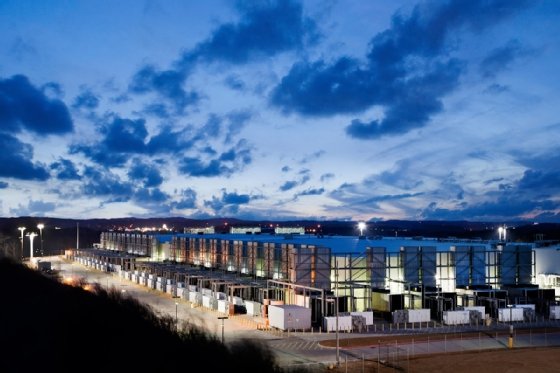Data center temperature and humidity guidelines
ASHRAE maintains a recommended list of humidity and temperature level standards for data centers. Discover how to keep your data center environment in tiptop shape.
Maintaining the proper temperature and humidity levels in a data center is a critical task for any organization with an on-premises IT environment. Data center hardware is designed to operate within specific temperature and humidity ranges; exceeding these can potentially damage equipment and even void its warranty.
In 2004, the American Society of Heating, Refrigerating and Air-Conditioning Engineers (ASHRAE) began maintaining a list of humidity and temperature level standards for data centers. Adhering to these standards can help an organization ensure the longevity of its hardware.
ASHRAE equipment classes
Before delving into ASHRAE's temperature and humidity recommendations, it's important to understand that they vary based on the types of equipment installed. ASHRAE defines four primary classes of data center equipment: A1, A2, A3 and A4.
A1 class equipment, which includes most enterprise servers and storage hardware, has the strictest temperature and humidity requirements, while the requirements become progressively less stringent for A2, A3 and A4 class equipment. Most data center hardware is classified as A1 or A2, while A3 and A4 are more closely tied to workstation hardware and PCs.
It's also worth noting that ASHRAE provides two different metrics for each equipment class: recommended and allowable. The recommended temperature and humidity range is what ASHRAE considers to be optimal for the equipment in question. The allowable metric is essentially a broad range within which the equipment can be expected to function properly.
What is the recommended temperature for data centers?
ASHRAE's "2021 Equipment Thermal Guidelines for Data Processing Environments" provides temperature guidance for the A1 through A4 classes of hardware.
According to ASHRAE, the recommended temperature range for A1 to A4 class hardware is 18 to 27 degrees C (64.4 to 80.6 degrees F). This metric is based on dry-bulb temperature, which is essentially the ambient temperature of the air surrounding the equipment.
Keep in mind that this range is a recommendation, and no governing body enforces these temperature ranges as a matter of regulation.
Although the recommended temperature range is identical for all four classes of data center hardware, the allowable temperature varies by equipment class. For example, according to ASHRAE's guidance, the allowable temperature is from 15 to 32 degrees C (59 to 89.6 degrees F) to 5 to 45 degrees C (41 to 113 degrees F).
ASHRAE has also created a fifth class of equipment called H1 that pertains to high-density servers. The recommended H1 temperature is 18 to 22 degrees C (64.4 to 71.6 degrees F). The allowable temperature is 5 to 25 degrees C (41 to 77 degrees F).
As you can see from the text above, there is a significant difference between the recommended and allowable temperature ranges. Most data centers maintain a cooler operating temperature. Although it can be theoretically acceptable for Class A1 to operate at temperatures as high as 32 degrees C (89.6 degrees F), keeping server rooms at such high temperatures is generally frowned upon. Few, if any, real-world data centers are kept so warm.

What is the recommended humidity for data centers?
As was the case for air temperature, ASHRAE provides both recommended and allowable metrics for data center humidity. In each case, ASHRAE provides guidance for both the relative humidity -- the amount of moisture in the air -- and the dew point or temperature at which water vapor turns to liquid, assuming a constant air pressure is maintained. It's also worth noting that ASHRAE's recommendations assume a change rate of no more than 5 degrees C (41 degrees F) per 20-hour period and must be adjusted for elevation. ASHRAE's metrics are based on an elevation of 3,050 meters (10,006.56 feet).
The recommended humidity for A1 to A4 equipment is a dew point temperature range of -9 to 15 degrees C (15.8 to 59 degrees F), with relative humidity ranging from 50% to 70%.
Allowable humidity for A1 to A4 equipment ranges from a minimum dew point of -12 to 17 degrees C (10.4 to 62.6 degrees F) to a maximum dew point of -12 to 24 degrees C (10.4 to 75.2 degrees F). The relative humidity level ranges from 8% to 80% for Class A1 and from 8% to 90% for Class A4.
How to monitor the temperature and humidity of data centers
There are countless devices available to monitor both temperature and humidity. However, data center operators should work with their cooling systems manufacturer to find a monitoring system that can integrate with their systems and adjust as necessary.
Temperature regulation works similarly to any other climate-controlled environment. A thermostat monitors the air temperature and adjusts the cooling system accordingly.
Regulating the humidity in a server room can be more difficult. Data centers located in cooler climates often ingest outside air as a way of keeping the cooling systems from having to work so hard. This makes the data center more energy-efficient. The problem with this approach is that pulling air in from the outside means the humidity level is constantly changing. If the humidity is too high, condensation can occur, potentially shortening the life of various components. Ideally, sensors should detect high levels of humidity and divert air flow so that humidity levels remain within the acceptable range.
Best practices for meeting data center ASHRAE temperature and humidity standards
Individual data center hardware manufacturers provide their own metrics pertaining to the humidity and temperature levels in which their hardware can be used. Although ASHRAE specifications should be treated as a recommendation, the hardware manufacturer's data should be regarded as a mandate.
Another best practice is to place temperature and humidity sensors throughout the data center to detect any pockets of hot air that might go unnoticed.
For more in-depth information on temperature and humidity control in the data center, please read "Explore hot and cold aisle containment for your data center."






